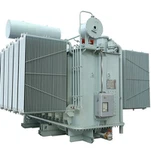In electrical power systems, transformers are essential for modifying voltage levels, ensuring safe and efficient electricity transmission. A key component that helps in regulating voltage without interrupting the operation is the No-Load Tap Changer (NLTC). This device is commonly used in oil-filled transformers, where oil acts as both an insulator and a cooling medium.
In this blog, we'll dive into what an NLTC is, how it functions, and why it is critical for the performance of oil transformers in power distribution networks.
What is an NLTC?
A No-Load Tap Changer (NLTC) is a device in a transformer that allows for the adjustment of voltage levels by selecting different taps on the transformer winding. The key characteristic of the NLTC is that it only functions when the transformer is not under load, meaning it must be de-energized before changing taps.
Unlike the On-Load Tap Changer (OLTC), which can operate while the transformer is under load, the NLTC requires the transformer to be switched off before the tap change occurs. This means that the voltage regulation takes place when the transformer is not supplying power to the grid, making the NLTC ideal for situations where minor adjustments are needed without immediate load fluctuations.
How Does an NLTC Work?
An NLTC allows the operator to change the tap position on the transformer's winding, adjusting the voltage output. The tap changer is connected to several taps at various points on the transformer winding. By selecting a different tap, the transformer can output a different voltage.
Since the tap change in an NLTC occurs only when the transformer is de-energized, it requires a manual or automated mechanism to safely perform this operation. The process of selecting taps involves the following steps:
Power Isolation: Before making any changes, the transformer must be taken offline to ensure that no current is flowing.
Tap Selection: After isolating the power, the NLTC selects a new tap on the transformer's winding. This is typically done through a switchgear mechanism, either manual or motorized.
Voltage Adjustment: The new tap adjusts the voltage output of the transformer. The NLTC provides a range of voltage options that can be selected based on load demand or grid conditions.
Why Are NLTCs Important in Oil Transformers?
Voltage Regulation in Stable Conditions: NLTCs are typically used in situations where voltage regulation is necessary but the load conditions are stable. They are particularly useful for making adjustments when the load is low or when the transformer is out of service.
Reliability and Safety: Since the NLTC operates only when the transformer is offline, there is no risk of arcing or power surges during the tap change. This makes the operation safer and more predictable compared to OLTCs, which work under load.
Long-Term Efficiency: The primary function of the NLTC is to ensure that voltage levels remain within a required range for the stability of the network. This ensures long-term efficiency of the electrical grid, especially in areas where power demand changes only occasionally, and regular adjustments are not needed.
Cost-Effective for Certain Applications: For certain transformer applications where frequent voltage regulation under load is unnecessary, using an NLTC is more cost-effective than OLTCs. NLTCs are simpler and have fewer moving parts, which can result in lower maintenance costs.
Key Components of an NLTC System
Tap Selector Switch: The tap selector switch is used to select the desired tap position on the transformer winding. It typically requires an external control mechanism, such as a motor, for automated operations.
Isolation Mechanism: Since the NLTC operates when the transformer is not under load, it includes an isolation mechanism to ensure that power is disconnected before changing taps.
Switchgear and Mechanism: The switchgear assembly controls the tap changer's operation, ensuring safe and precise positioning of the taps.
Oil Compartment: In oil-filled transformers, oil serves as an insulating medium that also helps in dissipating heat. The oil compartment ensures that the tap-changing mechanism remains cool and well-insulated.
Challenges and Maintenance of NLTCs
Although NLTCs are relatively simple and reliable, they still come with some challenges:
Limited Flexibility: Since NLTCs can only change taps when the transformer is offline, they cannot respond to dynamic changes in load conditions. This limits their use in situations where continuous voltage regulation is needed, such as in high-demand grid systems.
Manual Operation: Many NLTC systems require manual operation, which can introduce delays in adjusting the voltage when needed. More advanced automated systems can improve responsiveness.
Maintenance: Over time, mechanical components such as the tap selector switch may wear out. Regular inspections are necessary to ensure that the NLTC is functioning properly and that the oil is free from contamination that could affect operation.
Maintenance Tips for NLTCs:
Ensure that the transformer is properly isolated before making any tap changes.
Check the oil quality regularly to ensure proper insulation and cooling of the system.
Inspect mechanical components, including the tap selector switch, for wear.
Periodically test the operation of the NLTC system to ensure smooth functioning.
Conclusion
The No-Load Tap Changer (NLTC) plays an important role in oil transformers by allowing voltage adjustments when the transformer is not under load. While not as dynamic as an OLTC, the NLTC is an effective and cost-efficient solution for maintaining stable voltage levels in power systems with low load variation. It ensures safe and reliable transformer operation with minimal risk of power interruptions or mechanical failure.
For power system operators, understanding the function and maintenance requirements of NLTCs is essential for ensuring the continued efficiency and longevity of transformers in the network.
Call to Action: If your transformer operates with an NLTC system, consider implementing a regular inspection and maintenance schedule to keep it in optimal condition. Proper care will ensure reliable voltage regulation and enhance the transformer's service life.











